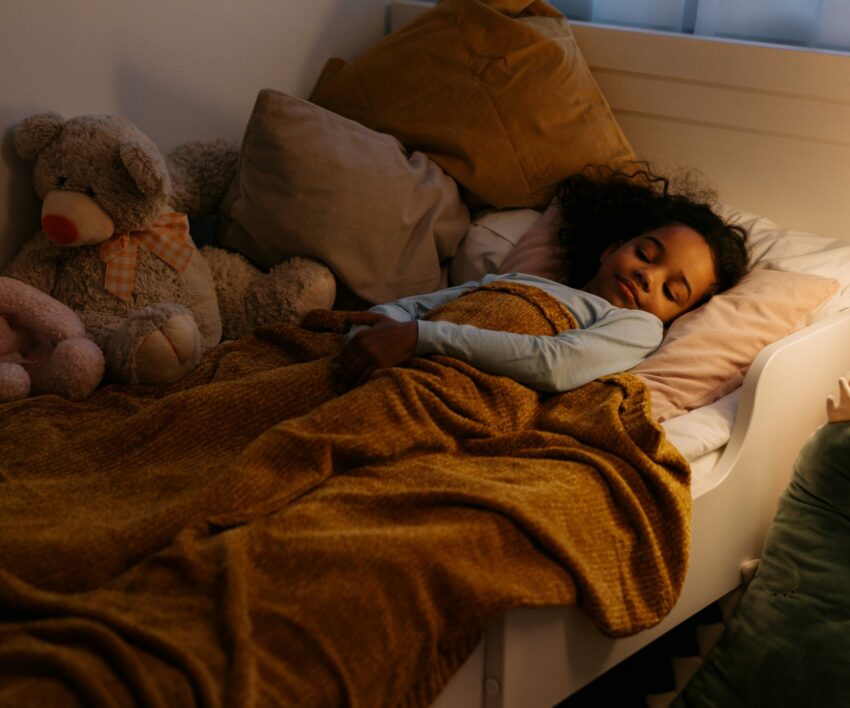
As a parent, you get relieved once your child passes the stage of waking up 12 times at night, either needing a bottle, a nappy change or just soothing. But what happens when they are much older and they still struggle with sleep?
Insomnia is not uncommon in children and it is better to treat the issue at its early stages before it lingers on and messes up with the child’s entire well-being.
The human health and well-being media publication, WebMD suggests that if you notice that your child experiences sleeplessness, here are some of the things you should consider first.
- Try to identify stressors. For example, additional homework, problems with friends, or a move to a new neighbourhood can cause nighttime anxiety.
- Establish a regular bedtime routine that allows your child time to relax before the lights go out.
- Avoid media like computers, TVs, and phones before bedtime.
- If insomnia continues, talk to your child’s doctor about ways to resolve the problem.
The Boston Children’s Hospital states that insomnia in children can be caused by the following factors. These are not limited to but can include:
- An additional sleep disorder (such as obstructive sleep apnea or restless legs syndrome)
- Anxiety or stress
- Psychological, or developmental illness such as autism, ADHD, depression, or asthma.
- Too many soda and energy drinks
After you’ve determined the potential reasons for your child’s insomnia, it is easier to act. While there isn’t a one-size-fits-all, these simple tactics suggested by several experts can help your child get a good night’s sleep.
Have a sleep diary
Vicki Beevers, CEO of The Sleep Charity, which is an online publication that provides advice and support on how to sleep better, states that having a sleep diary is a proactive technique to assist develop patterns if you’re attempting to figure out why your child is not sleeping. She said, “You can find out from a diary the average amount of time your child spends sleeping as well as the times they wake and go to sleep.” This can be useful in determining the child’s body clock before initiating sleep intervention.” Vicki states that keeping a sleep journal can also help identify patterns in eating habits, napping patterns, and bedtime rituals. “Maintaining a log of this type for a few weeks might be beneficial in identifying possible sources of sleep disturbances as well as providing important information should you choose to consult your general practitioner about your child’s issues.”
Practise mindfulness and breathing exercises
The process of calming down before bed can be facilitated by simple focused exercises. While reading is a no-brainer, other peaceful activities like yoga, jigsaw puzzles, and colouring and drawing can also be beneficial. This is according to Happiful, an online magazine for mental health and well-being. “Simple breathing exercises that help focus the mind and create tranquillity can help you maintain awareness after lights out.” It is recommended to teach your child the technique known as “box breathing” by inhaling for four counts, holding the breath for four seconds, exhaling for four counts, holding the breath for four more counts, and repeating the process.
Consider using deep-pressure stimulation:
Weighted blankets are meant to imitate the sensation of a hug by applying gentle, consistent pressure to the body. Because of their swaddling effect, they can therefore be a useful tool for calming down kids before they go to sleep. This is especially useful when anxiety is the root reason for the child’s inability to sleep.
A weighted blanket should be no more than 10% of the child’s body weight.
Let their bed only be for sleeping
The online mental wellness hub, Help Guide suggests that you ensure that your kid only uses their bed for sleeping and not for other activities like playing on their phones or watching TV while in bed. The publication states that otherwise, the kid will “start to link the bed with things other than sleeping and unwinding. In the same way, avoid using your child’s bedroom as a place of punishment because they will come to identify it with it.”
Also see: How to ease off the teething journey for your baby




